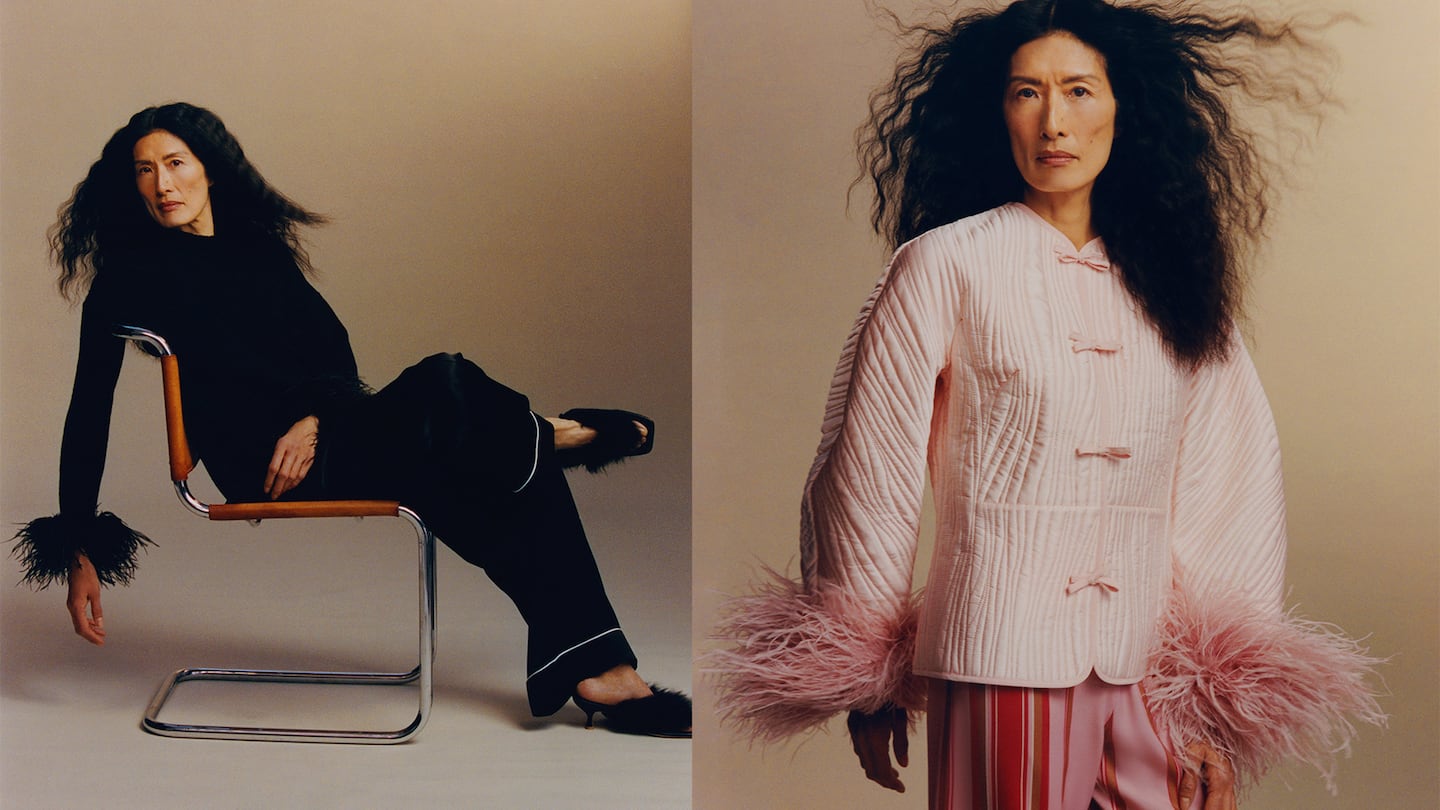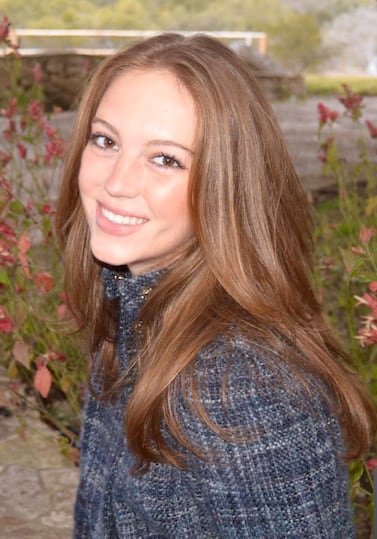The Business of Fashion
Agenda-setting intelligence, analysis and advice for the global fashion community.
Agenda-setting intelligence, analysis and advice for the global fashion community.

Nearly a decade ago, Kyiv, Ukraine-based former fashion editors Asya Varetsa (of Elle Russia) and Kate Zubarieva (Ukraine’s Pink magazine) were dreaming up a name for their yet-to-be-launched brand of what they called “walking sleepwear” — essentially, fancy pyjamas. Zubarieva suggested the name “Sleeper,” a catchy and literally descriptive moniker with an alternate meaning.
“They call ‘sleeper’ a horse that no one expects to win, but wins anyways,” said Varetsa.
That double entendre would prove to be fitting when Russia invaded Ukraine in early 2022, forcing the brand into survival mode.
The war made Varetsa and Zubarieva, now based in Copenhagen and Berlin respectively, look inward. Over the course of 2022, the self-funded brand’s sales — which had reached over $15 million in 2021, propelled by the success of its feather-lined pyjamas — shrunk 20 percent. They had to relocate their team and rework their operations and manufacturing.
ADVERTISEMENT
Despite the difficulties, the brand has persevered: after quickly shifting production to a new factory in Turkey in February 2022, the business has stabilised and is positioning itself for growth, said Varetsa and Zubarieva. In April 2023, the brand reopened its Kyiv atelier and has begun moving some production back to the city. Now, Sleeper is unveiling a rebrand with that message of resilience at its core.
“We realised we’re kind of like that horse,” said Varetsa.
Starting with a new logo on Oct. 31 — a horse carrying a yellow flower, an ode to femininity and Ukraine — Sleeper will reintroduce itself with a bolder vision of its original focus on women, comfort and confidence. The brand will operate on a shorter calendar, with a streamlined product assortment and a bigger storytelling-led advertising push. As well, Sleeper is eyeing wholesale expansion in the US and UK (its biggest markets) and growth in newer markets including Europe and the Middle East.
“When such a big, tragic event happens to you, it shocks you. You have this period of being unable to think, to move, to really understand what’s happening to you,” said Varetsa. “But you can find beauty even in the horror.”
The brand, which launched in 2014, grew steadily during the late 2010s, becoming a favourite among tastemakers including influencer Leandra Medine, model Emily Ratajkowski and Glossier founder Emily Weiss. Its elevated loungewear was a hit during pandemic lockdowns, and the business doubled sales to $8.4 million in 2020, said Varetsa.
Prior to the war, the brand did all of its manufacturing in-house in Kyiv, so when word of an imminent attack began spreading in late 2021, Varetsa and Zubarieva began making provisional plans to move production elsewhere. Following a two-week pause at the start of the war in February, the brand was back up and running out of a factory in Turkey, having relocated eight members of its product team to the country in order to ensure quality control and help train new factory workers. It provided aid to other employees looking to relocate as well.
“We literally built the business from scratch; we knew we had to keep the team, that’s what makes the business unique,” said Varetsa. “So we invested in it instead of growing the business.”
Working with an external factory for the first time was a challenge. Without direct control, Sleeper dealt with limits on minimums, time and workflow — which contributed to slowing sales in an already-challenging year for any Ukrainian brand. Sleeper produced five smaller collections instead of its regular six in 2022. Banner years in 2020 and 2021 gave Sleeper some financial cushion going into 2022, said Varetsa.
ADVERTISEMENT
“We took it as a year to regroup, refocus and go up again,” said Varetsa. “We really focused on the product that you could see was Sleeper.”

In April 2023, Sleeper reopened its Kyiv atelier, where it now does around 30 percent of its production, mostly intricate details like embroidery and customisations. (It also makes clothes for women in hospitals across the country.)
The experience made Varetsa and Zubarieva realise the importance of having a diversified supply chain, and that as their business got more complex, it would benefit from new expertise. Outside Turkey, it now works with a factory in Portugal. In September, Sleeper hired a new CEO, Natalia Shmalko, formerly CFO of Ukrainian agriculture company Astarta, to manage its now-global supply chain; and a UK-based head of wholesale.
“Supply chain has to be diversified by everybody, everywhere today. Things are so unstable,” said Gary Wassner, CEO of Hilldun Corporation, a factoring and financing company. “You have to have alternatives, you can’t be dependent on one source.”
The brand is also looking to expand wholesale; it’s currently stocked at Net-A-Porter, Bloomingdales and Farfetch and will list some items on J.Crew’s website in October.
For Zubarieva and Varetsa, Sleeper’s rebrand is more of a “rebirth” because it represents a deeply personal mindset shift.
“We left behind things that don’t work for us now: in our processes, in our ideas, in the core of our brand. We grabbed everything that is actually alive,” said Zubarieva.
In terms of product, that means better leveraging what works. Sleeper tightened its output from six collections to four collections a year, plus a bridal collection, set for release in April 2024. It will roll out new iterations of its best-sellers, including the feather-trimmed pyjamas, which account for around half of its sales; the Rumba suit set, a pyjama-inspired jumpsuit and the Atlanta dress, a smocked midi dress with off-the-shoulder sleeves.
ADVERTISEMENT
“We have a good, structured, understandable product. I believe in [the pyjama] so much,” said Zubarieva. “We don’t want to be the best in town in everything.”
Still, it will also introduce new items, like outerwear at higher price points (running from $500 to $600, compared to its regular range of $300 to $400) to fill in seasonal gaps, drive new purchases from existing Sleeper shoppers and elevate the brand. The brand will also introduce a collection of high-margin branded basics featuring its new logo starting at $190.
With its new visuals, the brand hopes to use advertising to create a stronger identity so consumers get to know the brand beyond its viral product. In January 2024, Sleeper will unveil a campaign focused on womanhood and the women — from doctors to Nobel Prize winners, mothers and comedians — who inspired Varetsa and Zubarieva to keep Sleeper going through its darkest moments.
“We had a plain logo, a minimalistic site … But we have amazing stories. This whole transformation is about being more proud. We want to put ourselves in a place to speak up,” said Varetsa.
Editor’s Note: This article was updated on 31/10/2023. A previous version stated Sleeper’s sales in 2021 were over €15 million. That is incorrect, sales were over $15 million.
Over a year after the Russian invasion of Ukraine, Vogue Ukraine is back in print with a new commemorative issue. Called “The Road of Unbreakable,” it features 50 different profiles of prominent Ukrainian individuals in its portfolio titled “Heroes.”
Julie Pelipas and Olya Kuryshchuk discuss the impact of the war in Ukraine and how creativity has endured and been a source of strength amid the destruction.
CNN chief international correspondent Clarissa Ward spoke at BoF VOICES 2022 about victory and grief in the crisis, and what the international community must do to stand with the Ukrainian people.

Joan Kennedy is Editorial Associate at The Business of Fashion. She is based in New York and covers beauty and marketing.
Designer Carly Mark sparked conversation about what it takes to make it as an emerging designer in New York when she announced she was shutting her ready-to-wear line and moving to London. On Thursday she held her last sample sale.
To stabilise their businesses brands are honing in on what their particular consumer wants to buy, introducing new categories and starting conversations.
That’s the promise of Zellerfeld, a 3D-printing partner to Louis Vuitton and Moncler that’s becoming a platform for emerging designers to easily make and sell footwear of their own.
With a new heavyweight backer in Italian firm Style Capital — which helped Zimmermann secure a billion dollar valuation — the French contemporary womenswear brand has ambitions to go global. But it sits in a competitive and hard-to-crack category.